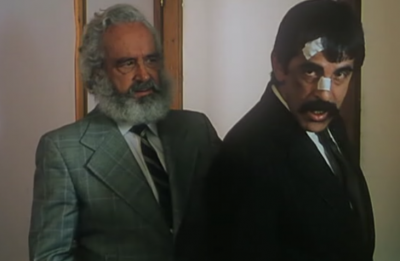La estrategia del caracol
![]() La Estrategia del Caracol is a 1993 Colombian movie , a classic of their national cinema.
La Estrategia del Caracol is a 1993 Colombian movie , a classic of their national cinema.
As most masterpieces that do not fall in the Hollywood sphere of influence, the work require some effort of immersion into a truly foreign culture, into the life of people, of a society, that is not that formatted by our own or by the American one. This movie is to the life of the Bogotanos what "Mon Oncle Antoine" is to the life of rural Quebec.
Warning: Spoilers, read no further if you would prefer to discover the revealed bits by yourself.
People face eviction from their neighborhood in La Candelaria. They try various tricks to merely delay the unavoidable expulsion, carried out with strict administrative adherence to the procedure, the clerk standing by on his little table to transcribe from the very streets which legal steps are to be taken, taking note of the options, the obstacles, the insults, the incidents, the police charges, etc. This is done for the benefit of a rich landlord, using corrupted intermediaries and sympathy of the public goes with the oppressed people. As the little people realize they will eventually be put out, they decide on a strategy. As they need time to arrange it, they agree to vacate "by Friday", even offering to paint the house when they're gone.

Setting the punchline of the movie on its pedestal: Hasta el viernes. Hasta el viernes, y le entragamos la casa pintada. Don Jacinto and 'Perro' Romero promise that if allowed till Friday, they will return the house "painted".
The strategy is that they will leave indeed but bringing the house with them. The promised painted house is a literally painted facsimile of the building that they have relocated by moving it bits by bits.
One of the major themes of the movie is dignity, as the move wins them rather little, and the interactions, not always the struggle, between the various strates of society. Don Jacinto and Romero are the two main figures, incarnating the resourceful and the faithful in law spirits of the people. Various shots of Bogotá and the play of each and almost every actor make it a great insight into Colombia (I like when Judge smiles at the Japanese serving him food, one of these moments that look out of place but that convey something genuine of the Colombian society, truly palpable to the European when he is there).
Another notable feature is the original music from Germán Arrieta (see also~[1]), an extract of which is reproduced here:
Links
- 56:34